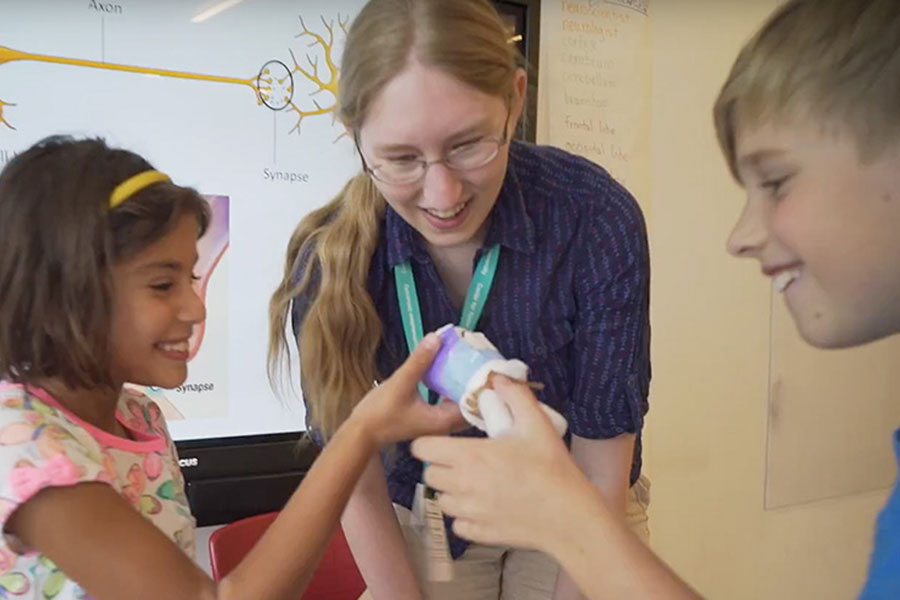By David Chan
Introduction:
With the holidays approaching, you and your loved ones may find yourselves sharing a holiday meal by candlelight. Instead of extinguishing these candles with your breath, why not use some chemistry to whip up a quick demonstration that is bound to impress and educate?
Density is a physical property of matter that can be quantitatively expressed as the amount of mass per unit of volume. Different substances can have different densities and with gases, a more dense gas can act as if it is “heavier” than other gases. This can be viewed with a demonstration using carbon dioxide or CO
2. In this activity, we will first create some carbon dioxide then we will show that the gas is more dense than other gases found in air (a mixture of several gases) and this property can be used to “pour” CO
2 onto a burning candle.
This activity is appropriate for ages 6+ but all students should be supervised since gases will be produced and an open flame will be used.
Materials Needed:
- Candle
- Matches
- Baking Soda
- Vinegar
- 2-3 large containers (Ex. 1 Liter beakers, Mason Jars, 2-Liter bottle-tops cut off)
Instructions for Doing the Activity:
1. Pour about 1 tablespoon of baking soda and 1/4 cup of vinegar into one container.



2. Either light the candle(s) or make sure existing candles are still lit.

3. After the bubbling has stopped, pick up the container with the liquid mixture and carefully pour the gas over the candle(s). Try to just pour the invisible gas and not the liquid!



Investigation:
1. How were you able to “pour” an invisible gas?
2. What does the candle need to continue burning?
3. How does adding carbon dioxide affect this?
4. Why is carbon dioxide commonly found in fire extinguishers?
Modifications for Younger or Older Students:
Younger students can try lowering a candle (carefully, or have an adult do this) into the container instead of pouring the gas onto the candle.
Older students may wish to extend the activity by trying to pour the CO
2 into a separate container first before pouring the gas onto the candle. Additional modifications include having students can set up a ramp or a similar apparatus to pour the gas over a distance down onto the candle.



Additional Resources and Links:
Experiment/Video:
http://bcove.me/vf8uymae
Density Animated Demo:
http://www.wiredchemist.com/anim-density
Same concept, using dry ice (solid CO
2) instead of baking soda/vinegar:
http://cldfacility.rutgers.edu/content/carbon-dioxide-flame-extinguisher
David Chan teaches the online Honors and Advanced Placement® Chemistry course for Center for Talent Development’s
Gifted LearningLinks program. He taught math and science for 10 years before becoming the Technology Integration Specialist at Evanston Township High School in Illinois He is also a technology consultant, a Google Certified Teacher and an Apps for Education Certified Trainer. He presents regularly at local, regional and national conferences on a variety of topics ranging from Google Apps to Screencasting.
Visit the Gifted LearningLinks website to find information on Honors and AP online courses for gifted students.


 2. Either light the candle(s) or make sure existing candles are still lit.
2. Either light the candle(s) or make sure existing candles are still lit.
 3. After the bubbling has stopped, pick up the container with the liquid mixture and carefully pour the gas over the candle(s). Try to just pour the invisible gas and not the liquid!
3. After the bubbling has stopped, pick up the container with the liquid mixture and carefully pour the gas over the candle(s). Try to just pour the invisible gas and not the liquid!







